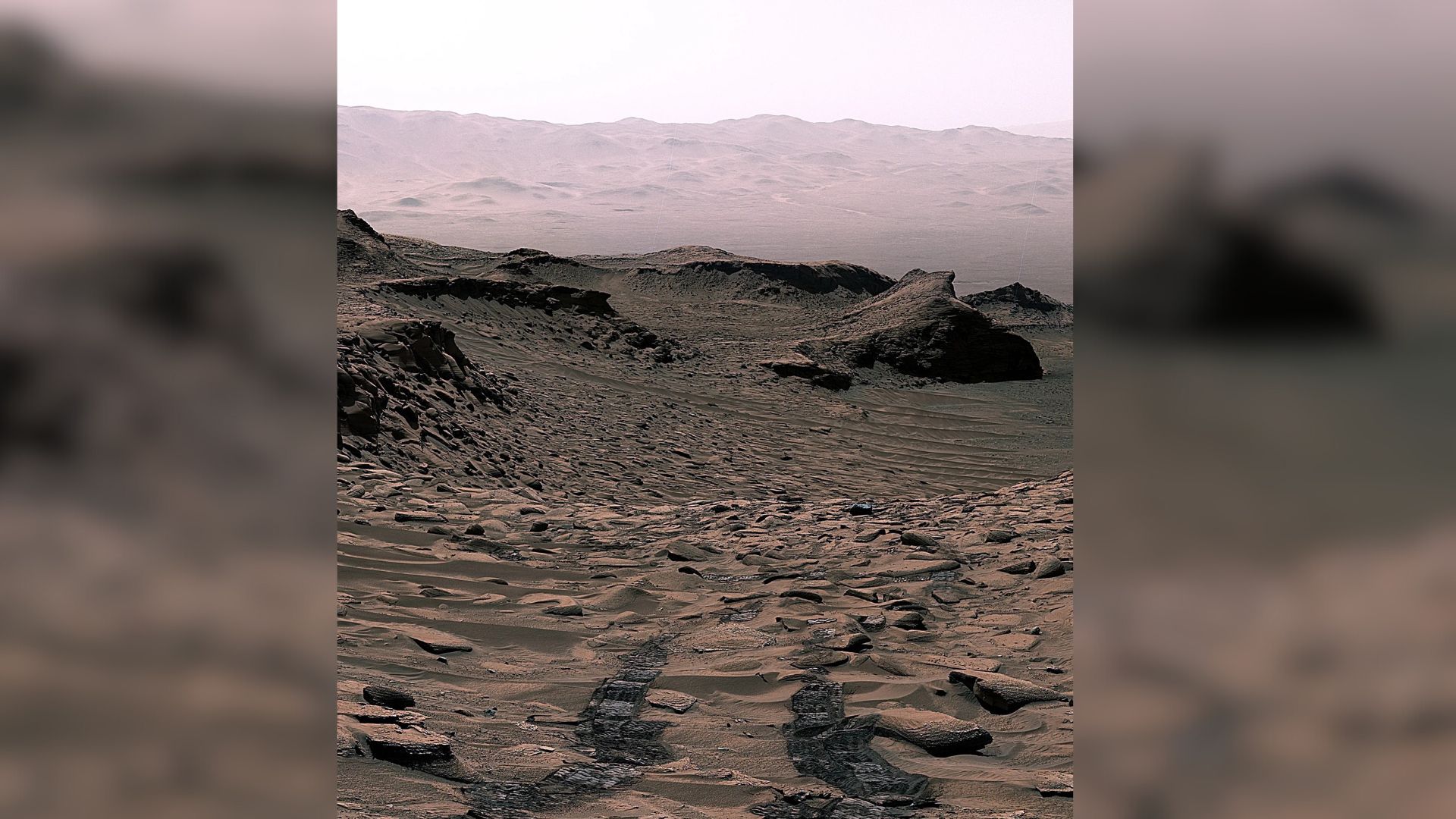The secret of why Mars grew cold and dry may be locked away in its rocks
By discovering carbonate rocks, NASA's Mars rovers may have unlocked the key to understanding the fate of the Red Planet's climate.

The discovery by the Mars rovers of carbonate in sedimentary rock on the Red Planet has enabled planetary scientists to rewind the clock and tell the tale of how Mars' warmer, watery climate 3.5 billion years ago changed to the barren, dry and cold environment that it is today.
We know that, in the distant past, Mars was warmer than it is today and had liquid water on its surface. We can see evidence for this in the form of ancient river channels, deltas, lakes and even the eroded coastlines of a large sea in the north. Sometime in the past 3.5 billion years, Mars' atmosphere thinned and its water either froze or was lost to space. The question is, how did that happen?
NASA's MAVEN – Mars Atmosphere and Volatile EvolutioN – mission arrived at the Red Planet in 2014 charged with studying the loss rate of Mars' atmospheric molecules to space. However, scientists know that the carbon in Mars' atmosphere, mostly in the form of carbon dioxide, cannot have been mostly lost to space. That's because the lighter carbon-12 would preferentially escape rather than the marginally heavier carbon-13 (the difference between the two being one extra neutron), but we don't see an excess of carbon-13 in Mars' atmosphere today.
The alternative is that Mars' atmospheric carbon must have rained out of the atmosphere and subsequently been locked away in the ground, in the form of carbonates embedded in sedimentary rock. The trouble is, searches for carbonates on Mars had always found nothing, until relatively recently.
Both current Mars rover missions – Curiosity climbing Mount Sharp in Gale crater and Perseverance exploring the river delta in Jezero Crater – have discovered carbonates, in the sedimentary rock that form Mount Sharp, and stretching tens of kilometers along the rim of Jezero.

Because carbon dioxide is a greenhouse gas, it can therefore regulate a planet's climate. Losing that carbon dioxide as it transforms into carbonate rocks would have had a drastic effect on Mars' climate.
To determine just how drastic, planetary scientists led by Edwin Kite of the University of Chicago modeled how losing its atmospheric carbon in carbonate rocks has affected how Mars' climate has changed over the past 3.5 billion years. This is coupled with the increase in solar luminosity as the sun brightens with age (in just over a billion years' time the sun will be too luminous and hot for life on Earth to survive). As the sun grew hotter, it breathed more heat onto Mars, increasing the planet's average temperature. This led to more precipitation, causing the carbon dioxide to rain out and become locked away as carbonate.
Breaking space news, the latest updates on rocket launches, skywatching events and more!
With the loss of the carbon dioxide's greenhouse effects, Mars cooled and grew drier. Intermittent spells of high temperatures and shallow liquid water were caused by orbital variations, similar to the Milankovitch cycles on Earth, which are periodic variations in the shape of Earth's orbit and the tilt of our planet's axis caused by the gravitational forces of the other planets, and which affect our long-term climate.
The difference between Earth and Mars is that our planet has been able to manage a continuous outgassing of carbon dioxide, mostly from volcanism, to maintain its presence in our atmosphere. Mars, which is about half the diameter of Earth, lost heat from its core more rapidly, which slowed down and ultimately – as far as we can tell – stopped Mars' volcanic activity. With no active volcanoes, or at least very few, there was nothing to replenish the carbon dioxide in the atmosphere.
These findings help explain the geological evidence of subsequent but increasingly less frequent bursts of liquid water on the surface of Mars during the past 3.5 billion years.
There is one caveat, which is that the study assumes that the abundance of carbonates at Gale crater is typical of the entire Red Planet. Carbonate samples need to be identified in many locations before we can say for sure that this was how Mars lost its greenhouse gas.
The research is published in Nature.

Keith Cooper is a freelance science journalist and editor in the United Kingdom, and has a degree in physics and astrophysics from the University of Manchester. He's the author of "The Contact Paradox: Challenging Our Assumptions in the Search for Extraterrestrial Intelligence" (Bloomsbury Sigma, 2020) and has written articles on astronomy, space, physics and astrobiology for a multitude of magazines and websites.
You must confirm your public display name before commenting
Please logout and then login again, you will then be prompted to enter your display name.
